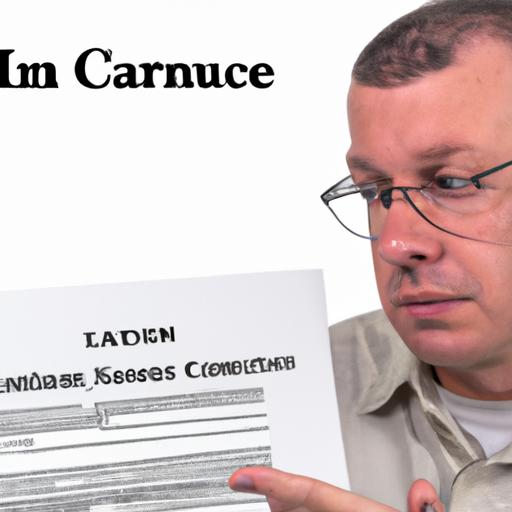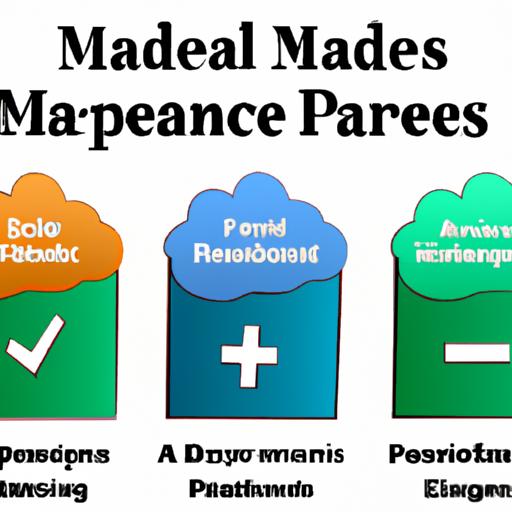The Car Claim Insurance Process: Understanding the Key Steps
Introduction
Have you ever been involved in a car accident? It can be a stressful and overwhelming experience, but understanding the car claim insurance process can help alleviate some of the burden. Knowing the ins and outs of how car insurance claims work is vital for ensuring a smooth and efficient resolution. In this article, I will guide you through the essential steps of the car claim insurance process, empowering you with the knowledge needed to navigate this often complex journey.
Why is it important to understand the car claim insurance process?
When an accident occurs, the car claim insurance process becomes your lifeline. It provides the means to recover damages and ensure that you are not left to bear the financial burden alone. However, without a clear understanding of how the process works, you may find yourself lost and struggling to receive the compensation you deserve. By familiarizing yourself with the steps involved, you can confidently navigate the process, knowing what to expect and how to proceed at each stage.
The objective of this article
This article aims to unravel the mysteries behind the car claim insurance process. From reporting the accident to receiving the claim settlement, we will delve into each step, providing valuable insights and practical tips along the way. Whether you’re a seasoned driver or a newly licensed one, this guide will equip you with the necessary knowledge to ensure a successful claim experience. So, let’s dive in and explore the key steps of the car claim insurance process together.
Understanding the Car Claim Insurance Process
Car insurance claims can be complex and overwhelming, but having a clear understanding of the process is crucial for a successful resolution. In this section, we will break down the key steps involved in the car claim insurance process, guiding you through each stage to ensure a smooth and efficient experience.
A. Reporting the Accident and Filing a Claim
The first step in the car claim insurance process is reporting the accident and filing a claim with your insurance company. This involves gathering all necessary information and documentation related to the accident, such as the date, time, location, and details of the parties involved. You’ll also need to provide any supporting evidence, such as photographs or witness statements. Once you have all the necessary information, contact your insurance company to initiate the claims process.
B. Initial Assessment and Investigation by the Insurance Company
After you file a claim, the insurance company will conduct an initial assessment to evaluate the claim’s validity and coverage. They will review the policy terms and conditions to determine if the claim falls within the coverage provided. Additionally, the insurance company will investigate the accident to establish fault and liability. This may involve collecting statements from involved parties, reviewing police reports, and assessing any available evidence.
C. Vehicle Inspection and Damage Assessment
As part of the claims process, the insurance company will appoint an adjuster to inspect your vehicle and assess the extent of damages and repair costs. The adjuster will evaluate the damage and provide an estimate for repairs. This step is crucial for determining the amount of compensation you may be entitled to.
D. Claims Settlement Negotiation
Once the extent of damages and repair costs have been assessed, the next step is claims settlement negotiation. This involves communicating and negotiating with the insurance company to reach a fair settlement amount. It’s important to understand your rights and the options available to you during this negotiation process. Working closely with your insurance company and providing any additional information they require can help expedite the settlement.
E. Repairing the Vehicle
After the claims settlement has been agreed upon, it’s time to repair the vehicle. You have the option to choose a repair shop of your preference, but it’s important to communicate with your insurance company to ensure they approve the repair shop and process. Coordinating repairs with the insurance company can help streamline the process and ensure that the repairs are carried out smoothly.
F. Claim Closure and Finalization
The final step in the car claim insurance process is the closure and finalization of the claim. This includes ensuring that all necessary paperwork is completed and submitted to the insurance company. It’s essential to review the documentation carefully and verify that all details are accurate. Once the paperwork is in order, you can expect to receive the claim settlement from the insurance company.
By understanding each step of the car claim insurance process, you can navigate the process more confidently and ensure a smoother and more efficient claims experience. Remember to stay proactive, communicate effectively with your insurance company, and seek assistance when needed to ensure a successful resolution.
Common Challenges and Tips to Streamline the Car Claim Insurance Process
Delays in claim processing and resolution
A. Reasons for delays
- Inadequate documentation: Failing to provide all necessary documents can significantly delay the claim process. Ensure you submit a complete accident report, photographs of the damages, and any relevant medical records.
- Investigation complexities: If the accident involves multiple parties or disputed liability, the insurance company may need more time to conduct a thorough investigation. This can lead to delays in processing your claim.
- High claim volume: During periods of increased claim activity, such as after natural disasters, insurance companies may face a backlog of claims. This surge in volume can cause delays in processing and resolution.
B. Tips to expedite the process
- Prompt reporting: Report the accident and file your claim as soon as possible. This allows the insurance company to start the investigation promptly.
- Provide thorough documentation: Ensure you provide all necessary documentation and evidence to support your claim. This includes photographs, police reports, witness statements, and medical records.
- Follow up regularly: Maintain regular communication with your insurance company to stay updated on the progress of your claim. This shows your commitment and may help expedite the process.
Dealing with denied claims
A. Understanding common reasons for denial
- Lack of coverage: It is essential to understand the terms of your policy. Some claims may be denied if they fall outside the scope of coverage provided by your insurance plan.
- Policy exclusions: Certain events or circumstances may be explicitly excluded from coverage. Review your policy carefully to identify any exclusions that may apply to your claim.
- Failure to meet policy requirements: Insurance policies often have specific requirements, such as timely reporting of the accident or prompt medical treatment. Failing to meet these requirements can result in claim denial.
B. Steps to appeal a denied claim
- Review the denial letter: Carefully read the denial letter from your insurance company to understand the reasons behind the denial. This will help you determine your next course of action.
- Gather additional evidence: If you believe your claim was wrongly denied, gather any additional evidence or documentation that supports your case. This may include expert opinions, witness statements, or additional medical records.
- Contact your insurance company: Reach out to your insurance company to discuss the denial and provide the additional evidence you have gathered. They may reassess your claim and potentially reverse the denial.
Navigating the claims process for different types of accidents
A. Car accidents involving third parties
- Exchange information: Collect the necessary information from the other driver involved in the accident, such as their insurance details and contact information.
- File a claim with the other party’s insurance: Contact the other driver’s insurance company to initiate the claims process. Provide them with all relevant information and cooperate fully during the investigation.
B. Accidents caused by uninsured or underinsured drivers
- Uninsured/underinsured motorist coverage: If you have this type of coverage, you can file a claim with your own insurance company. They will compensate you for damages caused by the uninsured or underinsured driver.
- Document the accident: Take photographs of the damages and gather any available evidence to support your claim.
- Cooperate with your insurance company: Provide all necessary information and documentation requested by your insurance company to facilitate the claims process.
Navigating the car claim insurance process can be complex, but understanding common challenges and implementing these tips will help streamline the process and increase your chances of a successful claim resolution. Stay proactive, communicate effectively with your insurance company, and seek professional advice when needed to ensure a smooth experience.
Important Factors to Consider During the Car Claim Insurance Process
When going through the car claim insurance process, it’s crucial to consider various factors that can significantly impact your experience and outcomes. By understanding and taking these factors into account, you can make informed decisions and ensure a smoother claims process. Here are some key factors to consider:
Understanding policy limits and deductibles
One essential aspect of your car insurance policy is the coverage limits and deductibles. Policy limits determine the maximum amount an insurance company will pay for a claim, while deductibles are the out-of-pocket expenses you need to cover before the insurance coverage kicks in.
It’s crucial to review your policy and understand your coverage limits and deductibles to avoid any surprises during the claims process. Knowing your policy limits can help you manage your expectations and assess whether the compensation offered aligns with your coverage. Additionally, understanding your deductibles can help you plan your finances and be prepared for any expenses you may need to pay upfront.
Impact on future insurance premiums
Filing a car insurance claim can have implications for your future insurance premiums. Insurance companies may consider your claims history when determining your premium rates. If you have a history of frequent claims or high-value claims, it may result in increased premiums. On the other hand, being claim-free for an extended period can often lead to lower premium rates.
Before filing a claim, it’s essential to consider the potential impact on your future premiums. If the damage is minimal and can be repaired without exceeding your deductible, it might be more cost-effective to handle the repairs out-of-pocket. Evaluating the long-term financial implications can help you make an informed decision about whether or not to file a claim.
Seeking legal assistance when necessary
In complex cases where liability is disputed or the insurance company is being uncooperative, it may be necessary to seek legal assistance. An experienced car accident attorney can guide you through the legal intricacies of the claims process, protect your rights, and ensure you receive fair compensation.
If you’re unsure about the extent of your injuries, liability issues, or facing difficulties in dealing with the insurance company, consulting with an attorney can provide valuable insights and support. They can help you understand your legal options, negotiate on your behalf, and ensure that you receive the maximum compensation you deserve.
By considering these important factors during the car claim insurance process, you can make informed decisions and navigate the process more effectively. Understanding your policy, assessing the impact on your premiums, and seeking legal assistance when necessary will help you achieve a satisfactory resolution to your car insurance claim.
Conclusion
In conclusion, understanding the car claim insurance process is essential for every driver. By familiarizing yourself with the steps involved, you can confidently navigate through the often complex and overwhelming journey of filing a car insurance claim. Remember the importance of promptly reporting the accident and gathering all necessary documentation. Be prepared for the initial assessment and investigation by the insurance company, ensuring that fault and liability are determined accurately. Coordinate the vehicle inspection and damage assessment, making sure you are involved in the process. Negotiate the claim settlement effectively, keeping in mind the impact on future insurance premiums. Finally, ensure all necessary paperwork is completed for the claim closure and receive the settlement you deserve.
By being knowledgeable about the car claim insurance process, you can streamline the process, avoid common pitfalls, and maximize your chances of a successful claim experience. Don’t hesitate to seek legal assistance when necessary, especially if your claim has been denied or if you encounter any challenges along the way. Remember, accidents happen, but with the right understanding and preparation, you can navigate the car claim insurance process with confidence and ease.
So, the next time you find yourself involved in a car accident, rest assured that you have the knowledge and tools to handle the situation effectively. Stay informed, be proactive, and let the car claim insurance process work for you. Drive safely, and may you never have to use this knowledge, but if you do, you’ll be prepared to navigate the process like a seasoned pro.






